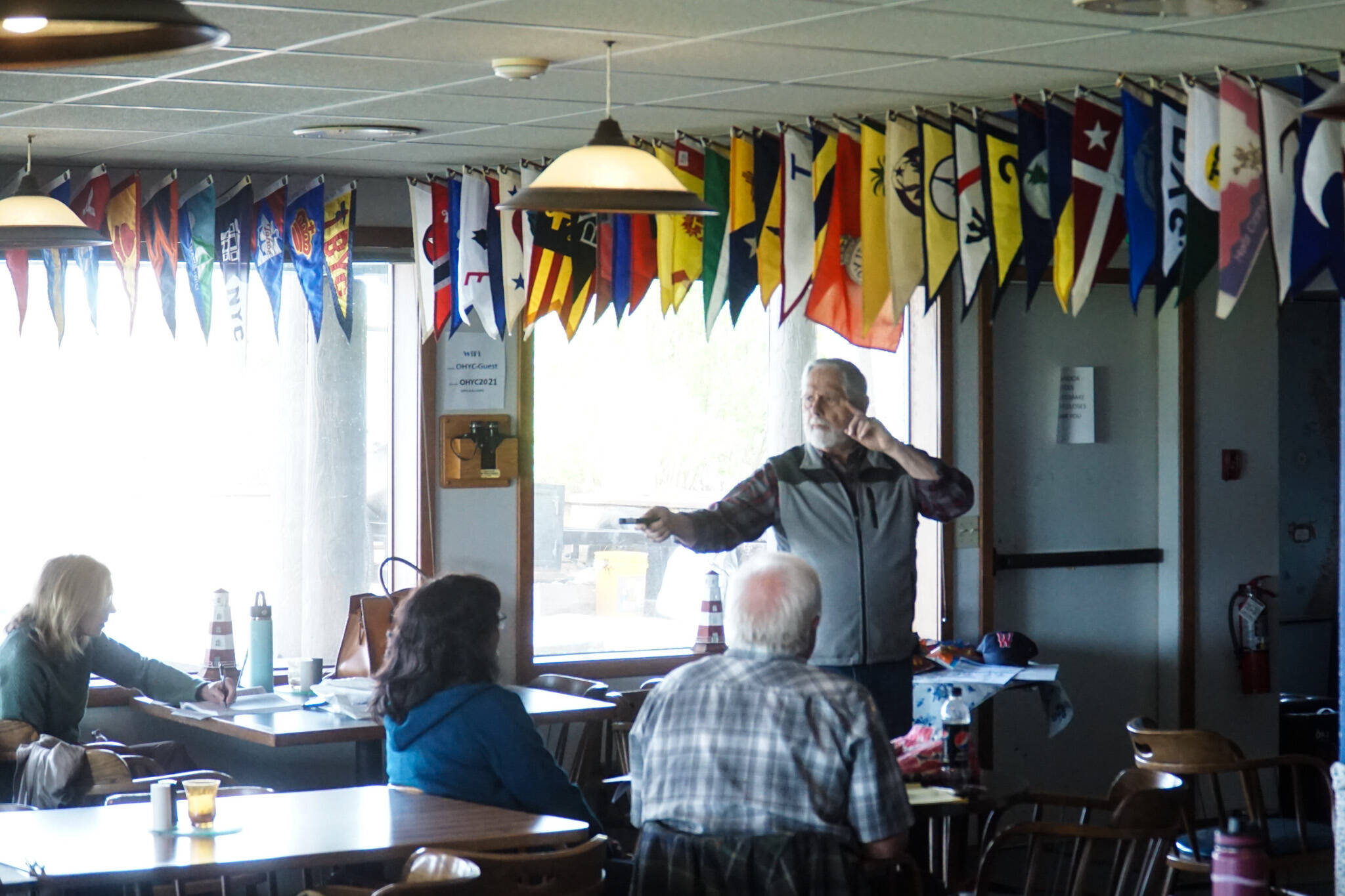Princess Louisa Inlet in British Columbia is made of 3,000-foot mountains plunging vertically into 600-foot depths. Fifty waterfalls pour in a four-mile stretch. The enormous nook has been compared to Yosemite Valley and the fjords of Norway. It’s widely considered one of the premiere boating destinations in the world, and it’s a ride away from Oak Harbor.
San Juan Islands also rank highly among global boating destinations, with all kinds of beautiful, historic and cultural sites. Jerry Liggett, commander of America’s Boating Club of Deception Pass, particularly loves the San Juan Island National Historical Park, the site of the Pig War between the United States and the United Kingdom in 1859.
“We’re seven miles from the San Juan Islands,” he said. “This is a boater’s mecca.”
Cruising the inlets of Garrison Bay, eventually the boater is fully surrounded by terrain, Liggett said, meaning no rough seas or winds and shallow water for anchoring ease. Better yet, it’s a short trail to the bus stop.
To many, a boat is a means to freedom. But according to Liggett, it’s useless without the knowledge to run it properly and stay safe doing so. That’s where America’s Boating Club of Deception Pass comes in.
America’s Boating Club is a trademark of the United States Power Squadron, a centuries-old nonprofit focused on improving boater skills and safety. Across the country, America’s Boating Club has over 20,000 members and over 300 squadrons.
The Deception Pass group began as a branch of the Bellingham Sail & Power Squadron, which was incorporated in 1959, and received its own squadron charter in 1976.
With $120 annual dues, cheaper than any yacht club, America’s Boating Club offers courses on boating licenses, boating safety, navigational software, fishing and even celestial navigation and more.
Saturday completed a two-day course on boating skills and certification, covering basic boat handling and docking, safety considerations, federal and state equipment and safety requirements and nautical “rules of the road.”
According to Coast Guard statistics, in 70% of boat-related fatalities, the boater had no formal safety training.
The Salish Sea has extra considerations compared to other chapters, Liggett said.
“I was here from a lake in California,” he said. “I go to the lake a lot to fish and all that stuff. I’m not on a lake anymore. This is a very dangerous lake out here, very dangerous. It’s not to scare you away, but you need to go out there with some knowledge.”
The club teaches more than how to stay safe, but to excel in the water. On a navigational chart, red arrows show worsening conditions and blue arrows show improving conditions. If a boat is moving at eight knots, the ability to read the tide and water conditions can get you up to twelve knots at no additional strain to the boat. Going out and not knowing how to read the chart, the opposite can happen.
While boaters can take the required safety course online, America’s Boating Club offers textbooks, dialogues with experts, refreshments and socialization. In June, willing club members are voyaging off to Princess Louisa Inlet.
Squadron leads are currently looking for volunteers to join the Squadron Emergency Response Assistance Team, partnering with the Island County department of emergency management to assist in the water.
For more information, visit deceptionpasssailandpowersquadron.com.


